COVID-19 is a respiratory disease, meaning it attacks the lungs. According to public health authorities, patients most at risk of severe illness or death from contracting the virus are those who have preexisting respiratory conditions.
The American Lung Association publishes estimates, compiled from multiple data sources dating to 2017 and 2018, of the prevalence and incidence of lung disease for each county and state, including those for Virginia. The conditions include pediatric and adult asthma, COPD (chronic obstructive pulmonary disease), adult chronic lung disease, and lung cancer.
I have compiled a risk factor based on these data — adding up the number of patients in each disease classification for each of Virginia’s localities and dividing by the locality’s estimated 2020 population. A risk factor of 0.289 for Highland County, the most vulnerable locality in Virginia, does not mean that 28.9% of the population has lung disease. Some people may fall into multiple categories. Rather the risk factor provides a quick-and-dirty indicator of prevalence and intensity of respiratory issues in a single metric. For details, consult the Virginia data, which appears here.
In the table above, I have listed the 10 localities with the lowest risk factors and the ten with the highest. By this measure, localities most at risk tend to be from rural counties; presumably they have older populations. Localities whose populations are least at risk skew toward Northern Virginia and urban areas. Click to “continue reading” to see the risk factors for every locality in the state. Presumably, Virginia’s public health authorities are taking data like this into account when preparing their response to the virus.
— JAB

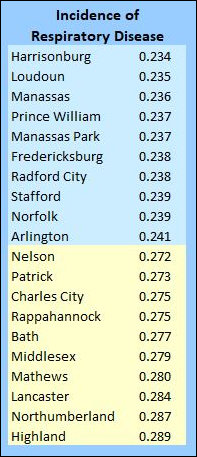
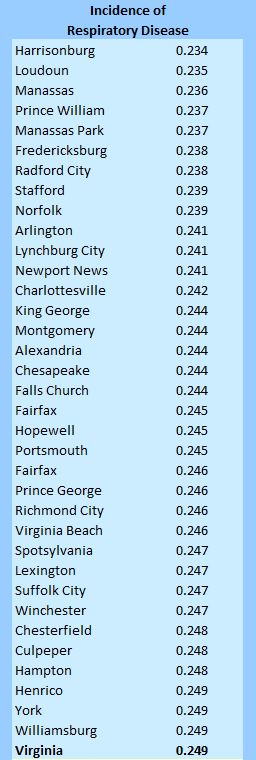
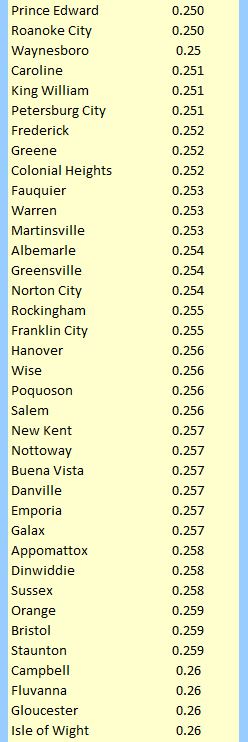
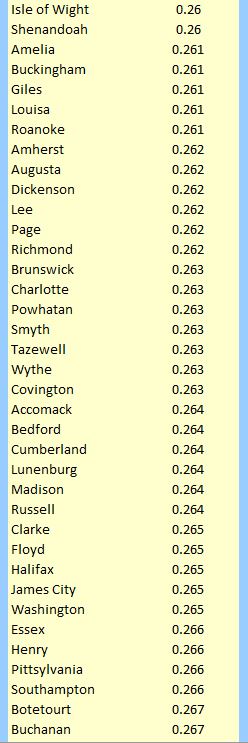
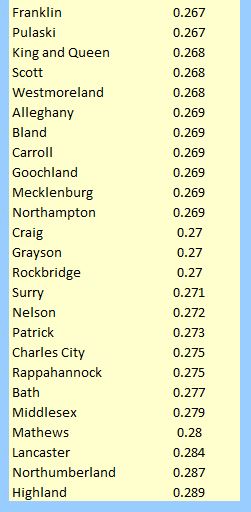
Leave a Reply
You must be logged in to post a comment.